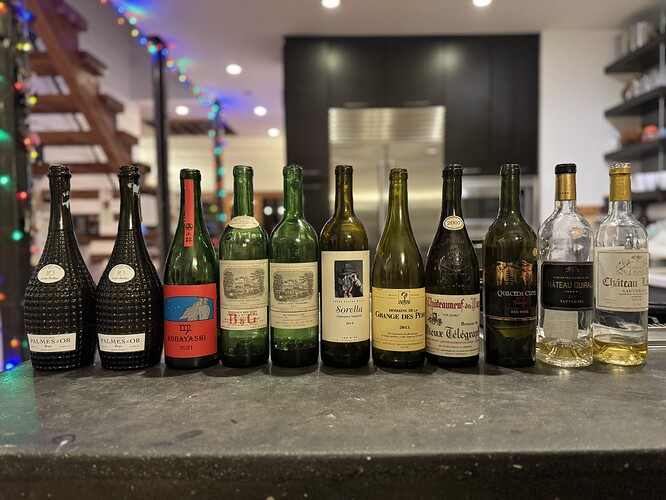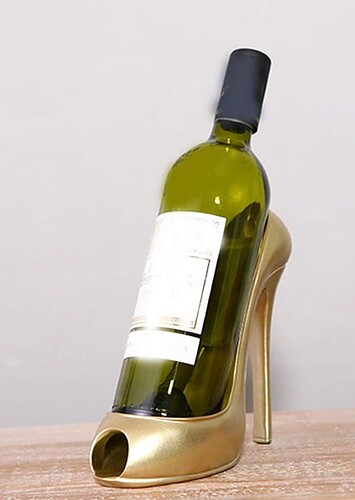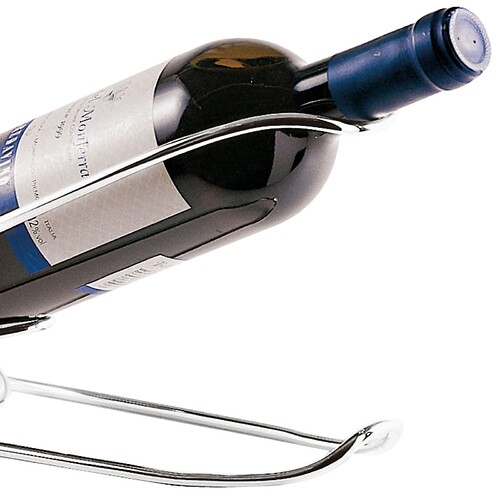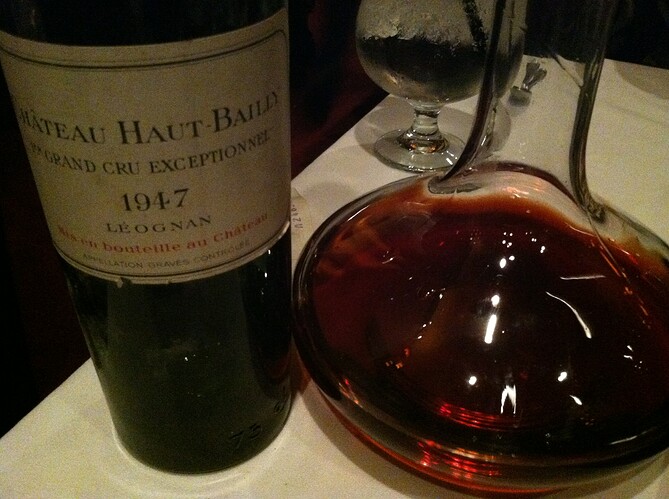The durand does the job and does it well. My only two complaints are a) the ah-so part destroys part of the side of the cork which makes it difficult to read, especially if the date is the section that is destroyed, and b) the astronomical price.
They’re not really that hard to find. They’re quite commonly found antique shops for example. Or alteriantiely at village markets, especially in the UK/France. Plenty available online/at auction as well. I probably have a few dozen lying around that I’ve picked up in various places over the years.
As others have said, a wine like this could show best within the first hour it is opened. I have had older wines lose their steam after that period of time. I would either not decant and let it evolve in the glass, or pour either half or the full bottle into the decanter and immediately start drinking. That way, you are not going to lose the experience of the evolution of the wine.
So the evening has come and gone. Really wonderful. on advice, we only opened two of the Lafites, from different provenance. The B&G labeled was definitely less exuberant out of the bottle, but opened up more in the glass. Our notes for all wines are as follows:
2008 Feuillate Palmes d’Or champagne - incredibly yeasty nose, with a touch of lemon zest. Taste of brioche, yeast, baked bread. fantastic and right up my alley for champagne
2021 Kobayashi Viognier - nose: intensely perfumed, with lime zest, lemon curd, grapefruit. taste of lemon oil, tropical fruit (but subdued) and baguette. my WOTN, universally adored in our group.
1966 Chateau Lafite: nose: mushroom, sous bois, leather, sage. taste cherry, sage, rosemary, plum skin, raspberry. variation by bottle. second bottle more fruit. totally resolved tannins with acid taking its place. A very interesting and thought provoking foray into older wines. Like tasting history. Definitely makes me want to try some of the older unicorn wines.
2015 Grange de Peres - nose black cherry, rosemary, medium body, soft chewy tannin, black cherry, flintstones vitamins? Delicious. My overall #2.
2014 Andrew Will Sorella - didn’t try till the dregs. dark cherry, medium tannin, medium body. Wish I could’ve had more as this wine is usually a knockout.
2007 Vieux Telegraph La Crau - nose: dark fruits, some leather. Taste of red fruits. Medium tannin, well resolved with some chew. For many, this was their WOTN.
2014 Quilceda Creek Palengat - note of light vanilla, stewed fruits. Huge wine. Red and black fruits, with a pronounced blueberry note. sage and rich herbs round out the full bodied glass. very very nice. One person’s WOTN, but definitely an outlier for the evening.
2005 Chateau Guiraud -relatively hot nose, could sense the alcohol, but honeysuckle predominant. taste ranged from cashew to honey. sweet but not cloying. Very nice conclusion to the evening.
2019 Chateau Laville - very sweet. bright floral nose. honey flavor predominant with medium viscosity. Could really benefit from a few years to bring some complexity to the profile.
Hi Loren, glad the 1966s worked out and showed well. Nice lineup
Very cool of you to loop back with your results — so often people ask for all this advice and then don’t come back to say how it went.
How did you end up handling the two Lafites?
This would be my advice (especially on using a cradle rather than standing up) though I’d then stagger the decanting times if you’re opening multiple bottles.
Edited to add: oops, now I see the event has already passed.
I stood the two bottles upright for 4 days in the cellar. First bottle we opened and poured immediately. That “old book” funk was on full display - rather interesting I thought, and there was quite a bit of evolution in glass. The second bottle we opened an hour before pouring. No funk on the nose, though mushrooms and entropy still very prominent. Most people like method number two, while I liked the first better. Lots of fun to try both.
There are lots of opinions about how to best handle old wines…given that you have 3 bottles I would suggest that you pick two ways that make sense to you, and enjoy your third bottle with whichever way shows best for you.
If these were my bottles I would set the bottles at a 35-40 degree angle to get the sediment into one part of the bottom of the bottle. I would decant one bottle for sediment and pour into a decanter that is tall & no wider than a traditional Bordeaux bottle. I would pour from the second bottle rather than decanting, with minimal bottle handling & movement. Between these two, one will perform better…I would re-create that with the third bottle.
Is there a functional wine cradle that isn’t several hundred dollars? Maybe I should start a thread about it.
Where are you finding wine cradles that cost that much?
I’ve used one of these for years. The bottom flange tilts easily for pouring. There are less expensive versions, but this works very well. I paid $70, they are now $80.
Yeah, Tim. For the price of two or three or four Durands, you can buy one of your mid week luncheon clarets.
I have quite a bit of success opening older bottles with a $7 Ah-so.
It was in this thread:
I just ordered one. Thanks a bunch.
I figure it’s pretty self explanatory, but if you have any tips or advice, I’d welcome learning from your experience.
Can you give more details on how you actually prepared the 66 Lafite?
It’s very interesting reading the divergent opinions of so many very experienced drinkers on this website. I guess I would just simply fall back to how they handle it at Bern’s in Tampa, where I would imagine the Somms have more experience with very old wines than probably any other professionals in the field. They keep the wines stored horizontally at cooler than normally recommended storage temperatures, they put the wines in cradles for display and opening, and they decant into some antique looking glass decanters. I’ve had many dozens of Bordeaux in the 50+ year range there, some even a hundred years old, and their method seems to work quite fine.
We followed this beauty, and a 1961 Pavie, over a 2.5 hours evening. Both were gorgeous. If anything, the 1961 drank more like a 1982.
My take is more in line with Andrew K.'s. Wines of that age that are in good condition virtually always benefit from a decant. They improve with some air and you don’t have to deal with sediment. I suspect the reason there is disagreement here is based on the experience that we’ve all had where a wine shows beautifully briefly, but then falls apart. And I would argue that those wines likely were on the wrong side of the “no great wines, only great bottles” argument.
As far as the Audouze method, from a scientific standpoint, it makes no sense. There isn’t enough surface area of wine exposed to result in any appreciable exchange of oxygen with a wine that is only open for a few hours prior to serving.



